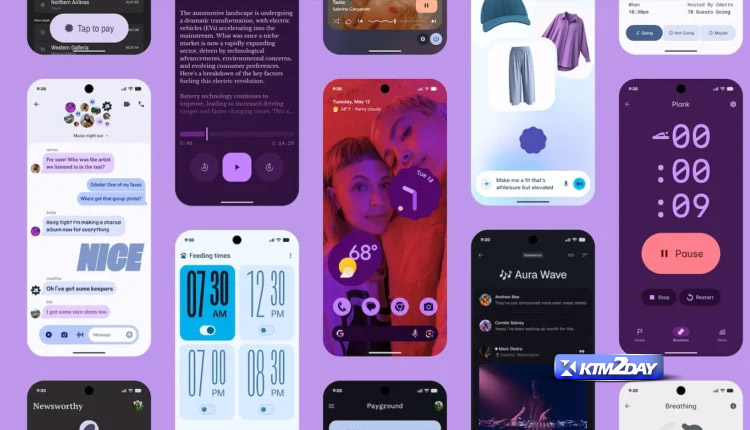Google Releases Android 16: What’s New and What’s Still Missing


Mountain View, CA – June 11, 2025 – Google has officially unveiled Android 16, the latest iteration of its ubiquitous mobile operating system, promising a fresh wave of innovations aimed at enhancing user experience, bolstering privacy, and deepening AI integration. As millions of Android devices worldwide prepare for the update, the tech community is buzzing with anticipation over the new features. However, as with any major OS release, some long-standing user requests and potential areas for improvement remain unaddressed, sparking discussions about what still lies ahead for the platform.
What’s New in Android 16: A Deeper Dive into Innovation
Android 16 builds upon its predecessors with a focus on seamless connectivity, intelligent automation, and user control, reflecting Google’s evolving vision for a more integrated and smarter mobile ecosystem.
1. Next-Generation AI Integration with Gemini Ultra
Building on the foundation laid by previous AI advancements, Android 16 deeply integrates Gemini Ultra across the system. This isn’t just about a smarter voice assistant; it’s about context-aware intelligence woven into daily tasks.
Proactive Assistance: Gemini Ultra now offers real-time contextual recommendations based on your current activity. For instance, if you’re planning a trip, it might proactively suggest flight status updates, local restaurant recommendations, or even language translation tools based on your calendar and location data.
Intelligent Notifications: Notifications are no longer just alerts; they’re smarter. Gemini can now prioritize and summarize notifications from various apps, presenting a consolidated view of what truly demands your attention, reducing information overload.
Personalized App Behavior: Apps can adapt more intelligently to your habits. Over time, Android 16 learns your preferred app usage patterns, optimizing resource allocation, pre-loading content, and even adjusting UI elements to suit your individual workflow, making the phone feel truly personalized. This includes enhanced image recognition capabilities within apps like Google Photos, offering more intelligent search and editing suggestions, and a more sophisticated voice assistant experience that understands complex, multi-turn queries.
2. Enhanced Privacy and Security Controls:
A Digital Fortress In an increasingly data-conscious world, Android 16 introduces significant advancements in user privacy and device security, giving users unparalleled control over their digital footprint.
Device-Level Advanced Protection Program: Extending Google’s Advanced Protection Program (APP) from accounts to the device itself, Android 16 allows at-risk users (journalists, public figures, etc.) to activate Google’s strongest mobile security measures. This ensures that all critical security features are enabled and cannot be accidentally or maliciously disabled.
Intrusion Logging: A groundbreaking feature, Intrusion Logging securely backs up device logs in a tamper-resistant, privacy-preserving manner, accessible only to the user. This forensic capability allows for detailed analysis if a device compromise is ever suspected, providing an unprecedented level of transparency and diagnostic power.
Granular App Permissions Refinement: Beyond the existing one-time permissions, Android 16 introduces finer controls over how apps access sensitive data. Users can now set time-limited permissions, specify access to parts of their media library (e.g., specific albums instead of all photos), and receive more detailed alerts on background data sharing.
Biometric Security Upgrades: Integration with next-generation biometric hardware allows for faster, more secure facial recognition and in-display fingerprint scanning, offering improved anti-spoofing measures and greater reliability in diverse conditions.
3. Seamless Foldable and Tablet Optimization:
A Form Factor Evolution Android 16 significantly refines the large-screen and foldable device experience, addressing long-standing challenges and unlocking new productivity paradigms.
Adaptive Split-Screen Views: Multitasking on larger displays is now more intuitive, with intelligent resizing and adaptive layouts that optimize app interfaces for various split-screen ratios, allowing for fluid transitions between single-app and multi-app modes.
Enhanced Desktop Windowing: Building on previous previews, Android 16 fully stabilizes and expands the desktop windowing experience for connected external displays. Users can now transform their phone or foldable into a powerful desktop environment with a persistent taskbar, freely resizable windows, and independent operation, mirroring a desktop PC workflow. This dramatically enhances productivity for users connecting to monitors.
Improved App Continuity: Transitions between folded and unfolded states, or between internal and external displays, are smoother than ever. Apps retain their state (e.g., scroll position, typed text) seamlessly, eliminating jarring resets and ensuring a continuous user experience across different form factors.
5. Gaming Experience Enhancements:
Powering Portable Play Recognizing the explosive growth of mobile gaming, Android 16 introduces significant under-the-hood and user-facing improvements for a more immersive and responsive gaming experience.
Optimized Graphics Rendering: Enhanced graphics rendering pipelines ensure higher frame rates and visual fidelity, especially on devices with high-refresh-rate displays.
Advanced Haptics API: Developers gain access to a more sophisticated haptics API, allowing for richer, more nuanced in-game vibrations that align precisely with on-screen actions, adding a deeper layer of immersion.
GPU Driver Updates: More frequent and direct GPU driver updates are enabled, allowing for performance optimizations specific to new games and hardware, bypassing full OS updates.
Game Mode Refinements: The system-level Game Mode intelligently manages background processes, notification suppression, and resource allocation to prioritize gaming performance, ensuring minimal interruptions and maximum power for demanding titles.
What’s Still Missing: Areas for Future Growth
While Android 16 delivers impressive advancements, some areas still present opportunities for further refinement or remain on the user wishlist:
Truly Consistent Cross-Device Backup & Transfer: While Google’s backup is robust for Pixel devices, transferring all app data, call logs, and granular settings reliably between devices from different manufacturers remains a pain point. Users still report having to manually reconfigure app preferences and notification channels after switching phones. A truly universal and comprehensive migration tool that works flawlessly across the entire Android ecosystem, akin to what iOS offers, is still desired.
Deeper UI/UX Customization Beyond Material You: While Material You offers dynamic theming, some users crave even deeper customization options, such as more control over icon sizes, grid layouts beyond launcher limitations, and finer-grained animation speeds. The ability to truly “own” the look and feel of the device without resorting to third-party launchers or extensive tinkering could be expanded.
More Granular Battery Performance Profiles: While Adaptive Battery improves overall longevity, advanced users might desire more granular control over CPU/GPU throttling, network activity, and background app usage for specific apps or scenarios, allowing for truly customized power management beyond generic “battery saver” modes.
Enhanced App-Specific Permissions for Media Access: While Android 16 improves media access permissions, challenges remain for apps that require access to only certain types of media (e.g., just photos, not videos) or specific folders. Further refinement here could enhance user privacy without hindering app functionality.
Uniformity in Updates Across OEMs: Despite Google’s efforts, the fragmentation in Android updates remains a challenge. While Pixel devices receive updates promptly, the pace and consistency of updates across various OEM devices still vary widely, leading to a staggered rollout of new features and security patches for the broader user base.
Conclusion
Android 16 represents another significant step forward for Google’s mobile operating system, pushing the boundaries of AI integration, privacy, and user experience, particularly for the growing segment of foldable and large-screen devices. Its focus on intelligent, proactive assistance and enhanced security reflects the evolving demands of modern smartphone users. While the latest release addresses many critical areas, the journey towards a perfectly seamless and fully customizable Android experience continues. The “missing” features highlight ongoing challenges and opportunities for Google to further refine the platform, ensuring that Android remains at the forefront of mobile innovation for years to come.















